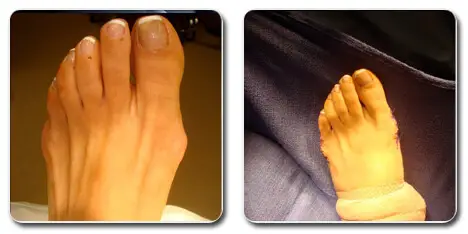Are Orthotics Helpful in Bunion Treatment?
Bunions are a common foot condition that affects millions of people worldwide. It is characterized by the formation of a bony bump on the base of the big toe, which can cause pain, swelling, and discomfort. Bunions can be caused by various factors, such as genetics, wearing tight shoes, or arthritis. While surgery is the most effective treatment for severe bunions, there are several non-surgical options available, such as orthotics. In this article, we will explore the role of orthotics in bunion treatment and whether they are helpful in relieving the symptoms of bunions.
What are Orthotics?
Orthotics are shoe inserts that are designed to correct foot abnormalities and provide support to the feet. They are made of different materials, such as foam, gel, or plastic, and can be customized to fit each individual's foot. Orthotics can be prescribed by a podiatrist or bought over-the-counter. They are commonly used to treat various foot conditions, such as flat feet, high arches, and plantar fasciitis.
How do Orthotics Help in Bunion Treatment?
Orthotics can be helpful in bunion treatment by providing support to the feet and reducing pressure on the bunion. They can also help to correct foot abnormalities, such as overpronation, which can contribute to the development of bunions. Orthotics can be designed to redistribute the weight of the foot, which can alleviate the pain and discomfort associated with bunions. In addition, orthotics can help to prevent the progression of the bunion by keeping the foot in the proper position.
Types of Orthotics for Bunion Treatment
There are several types of orthotics available for bunion treatment, each designed to address different aspects of the condition. These include:
Arch supports: Arch supports can help to correct overpronation and provide support to the arch of the foot. This can reduce pressure on the bunion and alleviate pain and discomfort.
Toe spacers: Toe spacers can be helpful in separating the toes and reducing pressure on the bunion. This can help to prevent the progression of the bunion and relieve pain and discomfort.
Metatarsal pads: Metatarsal pads can be used to redistribute the weight of the foot and alleviate pressure on the bunion. This can help to reduce pain and prevent the progression of the bunion.
Custom orthotics: Custom orthotics are designed to fit the individual's foot and provide personalized support. They can be helpful in correcting foot abnormalities and reducing pressure on the bunion.
Are Orthotics Effective in Bunion Treatment?
The effectiveness of orthotics in bunion treatment can vary depending on the severity of the bunion and the individual's foot anatomy. While orthotics can be helpful in relieving the symptoms of bunions, they may not be effective in treating severe bunions that require surgery. However, orthotics can be a useful tool in preventing the progression of bunions and providing relief for mild to moderate cases.
Conclusion
Orthotics can be a helpful non-surgical option for bunion treatment. They can provide support to the feet, correct foot abnormalities, and alleviate pain and discomfort associated with bunions. There are several types of orthotics available for bunion treatment, each designed to address different aspects of the condition. While orthotics may not be effective in treating severe bunions, they can be a useful tool in preventing the progression of bunions and providing relief for mild to moderate cases.
See Also:
- Tailor’s Bunion Pain: How To Treat Tailor’s Bunion Pain?
- The Connection Between Bunion Pain and Foot Alignment
- Bunion Pain Relief Cream: The Ultimate Solution to Foot Pain
- Lapidus Bunionectomy: Best Solution for Severe Bunion Pain!
- Lapiplasty Reviews: Is It The Solution to Your Bunion Pain?
- Bunion Pain Relief Home Remedies: A Comprehensive Guide!
- Best Pain Relief Pads for Bunions: Bye-Bye Foot Discomfort!
- Can Bunions Cause Leg Pain, Knee Pain, Hip Pain and Others?


Nhận xét
Đăng nhận xét